|
13ish billion years ago The Big Bang created the Universe 4.5ish billion years ago The origin of the Earth Earth is the only known planet where fire can burn 500-400ish million years ago ish – the origin of wild fire… The origin of wild fire is tied to the origin of plants, as fire needs oxygen and fuel. The 3rd factor - heat source, has probably been available throughout the history of the planet through lightning strikes, and volcanoes etc. Before the appearance of photosynthetic organisms, the atmosphere lacked sufficient oxygen, and before the appearance of terrestrial plants, it lacked fuels; thus, fire could not theoretically exist on our planet until the beginning of the Paleo zoic Era (540 million years ago ) the oxygenated atmosphere may have been sufficient to support fire, but the lack of terrestrial plant fuels limited the possibility of fire. Though as plant life increased over the millenia so did the occurrence of wild fire… …and as fire destroyed , it also cleared the way for new growth, and some species actually depend on fire for their survival…. (source: A Burning Story: The Role of Fire in the History of Life Juli G. Pausas, Jon E. Keeley;BioScience, Volume 59, Issue 7, July 2009, Pages 593–601 ) 14 million years ago The first great apes appear, our distant distant ancestors 2.5 million years ago the Genus Homo evolves 1 million years ago ish –it is thought our distant ancestor Homo Erectus started to tame the wild fire … Our distant ancestors lived amongst the wild fires, and over the millennia this connection with fire evolved and deepened. Initially it may have been base instincts and emotions like wild animals but over time as our ancestors evolved so did the connection with fire. I find it hard to imagine what life would be like without fire - we wouldn't have most of what we take for granted today without fire. No one can ever know what happened or over how long a time period, but in some way or other our ancestors realised fire made you warm, it kept wild animals away, and that cooked food tasted a lot better than raw food and so the story of our evolution began! And so our distant ancestors learnt to tame the wild fire, it changed EVERYTHING! And so I like to say that we are forged from fire! Once we had controlled fire, we guarded it, we had to keep it going as once it went out we couldn’t find it again until the next natural lightning bolt or lava flow …. or we stole it, or fought for it from others …. Can you imagine the status afforded from having fire…. and this faint ancestral memory is carried on in stories and folklore about how fire is stolen from those who keep it all to themselves….. (such as How Rabbit Stole Fire – Native American , Maui - Polynesian, Chen Sui – China, Prometheus - Greece) Fire must have been seen as special, precious, magical, revered… Fire enabled us to thrive, to adapt,… The wild fire was tamed…. Contained in the hearth fire…. Protected , nurtured…. The hearth fire became central, a focus, offering protection, warmth, light…. Evidence of hearths have been found in caves going back to a million years….and the significance of hearths has survived through the millennia….even today… And, Over time we would have learnt to transport it , which enabled us to roam more, not be constrained to one place without losing the precious gift of fire…. THEN 200 thousand years ago BOOM our species, Homo sapiens evolves and emerges from Africa and slowly spreads over the world Homo Sapiens would not have evolved without Homo Erectus taming the wild fire. The use and control of fire has been described as the “single most important innovation in our evolution”. It is thought that eating cooked food had a major impact as cooked food is much more easily digested; and provides additional calories to allow our brains to grow as we didn't need to process raw food our jaws and teeth became smaller and since we needed less intestines to digest food our torso became thinner. So our species would not have evolved, and would not have developed and advanced without fire. Then over time, through trial and error , over thousands of years, and the accidental attempts most likely started by our ape like ancestors…… Our ancestors learnt to “make” fire ….. A huge step forward, no longer constrained by having to protect and keep the fire… Though they still would have kept the hearth fires going, for warmth, light, protection, only putting them out when they had to , or at auspicious times… So we learnt to make fire…. By striking flint onto rocks rich in iron deposits … a tiny spark would appear… these sparks are not as hot and don’t travel as far as those struck from flint on steel….. …. It’s not easy, it takes time, it is difficult to get those tiny sparks to catch tinder, the tinder needs to be bone dry… they also learnt to make fire by rubbing wood together such as hand drill (common in Africa, Australian Aborigines, Native America’s, Ancient China, Egypt) fire plough (Polynesia) fire saw (Asia) and eventually bow drill (Alaska, Siberia, Egypt, Northern Hemisphere??) pump drill (Native America) no one knows when these methods were first used, or what came first…. A mystery….tho there is evidence throughout the world, of fire by percussion … mostly from the Mesolithic periodic (10,000BC) and earliest evidence of fire by friction is 4000BC ish (due to wood rotting) though most stories and folklore relate to fire by friction rather than percussion…. fire by friction seems a magical, mythical way, as if the wood contains fire and so some stories go that fire was hidden in the trees, that wood hid the fire and that the only way to find the fire again was to rub two sticks together (How Rabbit Stole Fire, Maui) this must have seen to be magical and through the various stories and fragments I get a sense that fire by friction was seen to be more holy and special then fire by percussion… it was also used in ritual to welcome in the fire so now Zooming forward again through the stone ages to 10,000BC the End of the Last Ice during the Mesolithic period, my homeland Britain, started to be settled by people who came across from Europe then from 4000BCish more settlers came over who brought new ways such as farming and spiritual beliefs, bringing with them the skills and knowledge of fire and so saw the transition from hunter gatherer to farmer …the Neolithic period began in Britain…. with the help of fire, trees were cleared to make way for crops… and they honoured fire and worshipped fire…. Then onto 3000 BC ish (only 5000 years ago) to the discovery of smelting metal from rock from ore through extreme heat of fire and wow how things rapidly started to heat up then with the Bronze Age… woodland started to be managed and coppiced so there was a steady supply of charcoal to feed the forges…. then to the Iron Age 1200BC , things really started to hot up, literally, you needed lots of raging heat to smelt Iron! The need and demand for fire was high, and the forges were hungry for fuel, wood (charcoal) had to be burnt in huge quantities..…. the landscape changing… the fire steel was then invented and the main method was then striking flint on steel (which continued on until 19th century!)… and the deep connection with fire was starting to fade…. but not entirely, not in ritual …. there is old language and old stories about fire by Friction, and it seems it was commonly used within ritual, in many cultures as it was still seen to be magical….. through the ages the Ancient Egyptians, Aztecs, Ancient Greeks, the Romans, Vikings etc etc …. fire still being revered…friction fire used in ritual….. sacred eternal flames were kept alive in Greece, in Rome, in Ireland to name a few, fire deities were worshipped… on through middle ages onto the industrial revolution fire was industrialised tho the magic of fire and fire by friction clinged on throughout Europe in the form of Neid fire rituals the church dismayed at this heathen practice tried to ban it several times thru the ages … and then in the early 19th century ….the last Neid fires burnt out for the last time in the highlands of Scotland and throughout Europe………. then the invention of the match in the mid 19th century replacing the 2000 year old method of flint and steel ….. and then you had fire in an instant…. BAM… Did people gasp in amazement, was it magical, was it amazing, or was it just taken as granted…. The connection fading…. and fire was being industrialised and mechanised on through into 20th century … in furnaces, in engines, in boilers, power stations, fire contained, restrained… hidden…. 1930s Ferrocerium invented which saw the invention of the lighter… and again whoosh we have instant fire…. A commodity even….. Do we gasp in amazement each time we work a lighter….. in each flame, do we revere in the million years of ancestral memory ?? … The deep connection and mysticism of fire pretty much a distant memory for most….. and here we are now in the digital age, everything in an instant, BAM our connections with the world, nature, each other, the mysticism of life, diminishing….. amongst all of this, indigenous peoples cling on, cling on to their ancestral memory, still welcoming fire using the old ways of fire by friction…. In Vedism in India, the Agni Manthan rituals still go on today , where it is believed that Lord Agni is born through the friction of wood, the friction of the Male spindle and female hearth, which procreates new life, the embryonic fire, the ember, which when fed with breath and tinder bursts into joyous life, Agni in the Celtic tradition, at Beltaine and Samhain, they would extinguish all fires and light a new pure fire (also Neid Fire) through friction of wood using a fire churn, a fire machine…. They would then walk the livestock through the smoke back into the pastures and all community fires would be relit from this new fire, a new fire symbolising a new phase of the year, new life, new growth….. this all but disappeared in the 19th century, the church banning the Neid fires, however in Russia a similar practice Sacred Live Fire can still be found today used by pagan groups here and there…. The ancestral memory clinging on and today In our modern world…. There are many eternal flames all around the world mostly to commemorate the fallen The Olympic flame is still lit several months before the opening ceremony of the Olympic Games at the site of the ancient Olympics in Olympia, Greece. Eleven women, representing the Vestal Virgins, perform a celebration at the Temple of Hera in which the first torch of the Olympic Torch Relay is kindled by the light of the Sun by a parabolic mirror. Edinburgh Beltane and Samhain fire festivals since 1989 – re-interpretation of the Celtic fire festival and lighting of the neid fire with bow drill camp fires still draw us in, people sing, talk, tell stories round the fire, fire still captivates us, fire is within us, wood stoves have made a come back, people wanting the fire visible in their home….the hearth fire…. the faint ancestral memory is there in us…. And so I welcome the fire, I don’t make the fire
and for me, like many traditions before me , and as can be seen by the many stories, fire by friction is …. holy, special, spiritual, it’s more than just a way to make fire, you could say it’s magical….. and so I am welcoming the fire through the friction of wood….. it’s not just a method but also a practice, it requires time and patience, knowledge and skills we have lost, and awareness, and respect. Respect - for well everything, the earth, nature, our ancestors, existence! - all bundled up into the act of preparing the friction sets and using them to welcome out the fire…… and behind me there is a million years of ancestral memory and billions of years of everything coming together into the one moment of welcoming the fire …. the ancestral fire, our creator, our ancestral memory, our future, our very survival. 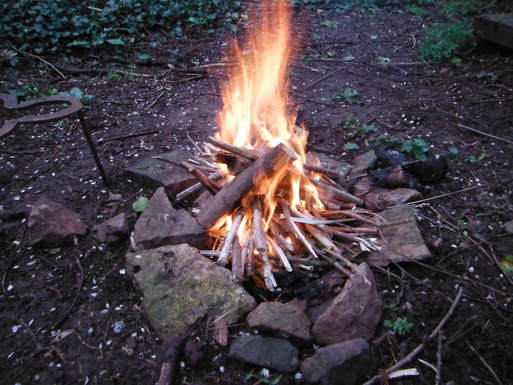 Sacred Hearth is an evolving project which started off by me learning the bow drill as a traditional way to light fire and over the years I’ve experimented with various friction methods, honed my skills and I’ve also been researching and exploring the folk lore, stories , ritual and sacredness of fire from all around the world. Over the years my connection with "fire" has naturally deepened through my practice of friction fire. Without fire we wouldn’t be here today - Homo Sapiens evolved only though our ancestors control and use of fire.
Though what is fire? At the end of a day it is just a chemical reaction, it is transitory, it's not physical, it's not alive. Though it's captured our imaginations throughout time, and we are still fascinated with it. It can elicit different emotions depending on the type of fire situation e.g. fear, comfort, safety etc etc. Our ancestors worshiped fire. It is one of the four elements. It is central to our survival and evolution and ongoing advancement. Countless books have been written about fire - so I'm only going to scratch the surface in this post (and these views and ideas are sure to change and evolve over time as I explore further!) This "connection" I talk about is something I'm still exploring as it's more than just connecting with "fire" but rather nature and life as a whole! So fire is just a chemical reaction - though I choose to embrace the mysticism of fire! Within my workshops I'd encourage others to explore their "connection with fire" and what "fire" means to them as everyone is different! It is easy to take things for granted, and I feel one of our issues as a species is that we just take take take take without really caring about the effect on the environment, as long as our species advances (though undoubtedly the human race will be it's own downfall! a whole different topic!) I’ve found through my regular “practice” of fire by friction and research and exploration of the stories and folklore that I started to connect on a deeper level and honour and respect fire as an entity in itself (which some may find hard to understand\agree with) ;as well as our control of fire and form a deeper connection with nature as a whole. Though I may add that I do not welcome fire every time the heating comes on or when I put the gas cooker on or start the car or use a knife (forged by fire) etc etc etc, It’s more of an underlying gratitude for "fire". I have coined a phrase “welcoming fire”, which really for me is just another way to say making a fire. I don't really like the phrase making a fire. Do we make fire? (that's another thought process entirely!) What I mean is that instead of just lighting a fire without really thinking about it , to do it with awareness and presence and a deeper connection and with intention and reverence and maybe verbally welcome or bless the ember (the embryonic fire) and then the flame as it emerges. For me, the methods in which I find I can really do it this way are the hand drill, bow drill and more recently the fire churn – not only because it is a traditional way used by our ancestors, and natural, but because you have to work at it, it takes time to learn the knowledge and skills (we have lost), it takes time to gather the materials, prepare the sets, make the cordage (I don’t make it all the time but try to as much as possible) , you have to have some awareness and put thought into it, and it is like a ritual even if you aren’t into rituals 😊 … And even though I know it’s not magic that it is a chemical reaction as the friction of the wood creates dust which once heated (through the friction) to the right temperature ignites …. well when that ember starts glowing it is magical! I can see how our ancestors thought fire was hidden in the wood as is told by many stories. Actually you could say fire is hidden in the wood as fire is a chemical reaction at the atomic level and everything is made of atoms :) And so yes, whether you agree or not I like our ancestor’s view that the fire is in the wood and you are welcoming the fire out into existence! However this is not to say that you can’t light a fire with awareness and deep respect and intention using a lighter, matches, ferro rods, flint and steel etc. For me it’s not the same, I don’t get the same feeling. Lighter\ matches\ferro rod are too instant, and man made - though yes I can still do it with intention and give thanks and bless the flame. I don't get the connection with striking flint either - even though fire by percussion is probably even older than fire by friction, I just don't get the same feeling that I get from coaxing an ember through the friction of wood. That’s also the same with the pump drill – it’s too mechanical for me. I even find the bow drill a bit too mechanical and I find the hand drill an even more profound way (it's just your hands and 2 pieces of wood! how magical is that!) For me the hand drill requires very regular practice which becomes like a spiritual practice like yoga or meditation (at the moment I just don’t have the time for the hand drill but I will pick it up again one day.) That’s also why I like to make my own cordage and use harder woods so it isn’t too easy and so that I have to work at it. It’s about not taking it for granted. Even though the fire churns are mechanical and large, I get a similar deep connection - maybe it's because they need a lot more work to make - sourcing the wood, carrying it,, seasoning and carving a 6 foot spindle takes time and effort, and that it needs to involve people communally working together and they were once used throughout Europe as a sacred way to ritually welcome fire. (I'm still exploring the fire churns...) So once you have welcomed that ember, that glowing ember, it can seem miraculous , that it emerged from the wood, born from the friction of the male spindle and female hearth (a view held in the Vedic tradition) The next step is to then feed the ember with tinder and oxygen, feed it with your breath, to breathe into it, to bring it into flame, to welcome the flame and when whoosh the flame appears, it can take your breath away. Even though it is a chemical reaction, it can seem magical. So I feel I have more of an underlying respect for fire irrespective of how it was produced whether it is wild\natural fire or human fire or mechanised fire (boiler, combustion engine, furnace etc.) I don’t go round blessing fire,…. I think it deserves to be revered as much as life and nature as a whole, and yes fire is just one aspect. But what about disastrous fires such as bush fires, house fires, car fires, infernos (such as Grenfell Tower) – what about those? The Grenfell Tower disaster was horrendous and sickening. Can I be in reverence to that type of fire? I can’t give thanks to it or bless it but it makes me realise that you have to respect fire , that fire is all consuming, that it can destroy , that it can kill, that it can be just as destructive as it can be creative. Moving onto another theme – sacredness of fire. What do I mean by sacred fire or welcoming fire in a sacred way. Well it depends upon how you interpret sacred. So looking at a couple of meanings in the dictionary:
OK so not everyone will agree with my views, or really get where I’m coming from and I’m still exploring this “connection” I realise the way I would like to teach is a bit different so my approach isn’t for everyone. To those who are interested, I’m approaching fire from a different angle that it’s not just about lighting a fire, but connecting on a deeper level, and as well as learning the skills we’ll also be exploring the stories, ritual and folklore. I also want to try and get away a bit from the western\bushcraft way of teaching – i.e. doing it on your own and that it’s a challenge\competition – that’s very different to indigenous cultures who work together. You don’t have to learn on your own and it’s ok to use the bow drill in a team ! This is also why I like the fire churns as they are a communal way to welcome fire. It’s an evolving project and my thoughts and views on it are ever changing too as I explore it further …… 😊 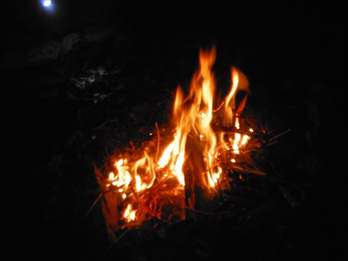 One of the things I'm trying to do is move away from just the practical ways of teaching fire lighting. I have run a few practical sessions on teaching bowdrill but I didn't really enjoy it which is one of reasons it has brought me to where I am today - exploring the sacredness of fire and my connection with fire. When it comes to sacred fire or just having a deeper connection, I feel the approach needs to be slightly different. So instead of just teaching individuals a practical way to make fire, it will be about connecting with fire on a deeper level before working as a group(s) to welcome in fire whether that is in a short taster session or a full blown "workshop", weaving in stories, folklore,mysticism, ritual, history and traditions as appropriate. A lot of us humans (and animals\plants etc too!) tend to be competitive and this shows in a lot of things we do, and as a species we wouldn't have survived if we weren't competitive! Maybe we want to be the best we can, or better than everyone else , or get some sort of acceptance or gratitude for what we do. In bushcraft this may be - making a bow drill set from scratch in under an hour, being able to create an ember from the smallest bow drill set, being able to create an ember with the bow drill as quick as possible etc. And yes I've been there and found myself doing those things, and I'm sure I will in the future too :) And yes those skills may be the difference between life and death in a survival situation, and some people like putting themselves in a survival situation just to prove they can do it but yes there are others who do it because that's their passion and they enjoy it. Also, once you have learnt friction fire, it can be just as easy for it to become another mechanical way of making fire and taking it for granted just as much as using a lighter - and I have found myself there on several occasions. For me it's about not going through the motions, but trying to keep that connection and one way of doing that is to slow down and instead of going for the quickest time, going for the slowest! Take your time over the selection of materials, take your time in making the set, and be aware of everything you do. And if you are welcoming fire as part of ritual, then it's not about speed or efficiency (aside- yes I have written an article about bow drill efficiency!) but about preparation and doing it with awareness and presence - and in fact you may want to fail and get it right on the 3rd time which is quite ritually symbolic! And also do you have to do it on your own?, Why not do it as a group , and as I've written before most rituals involve several people communally welcoming in the fire. Also the woods you choose may not be the easiest or most efficient woods, but may be more to do with their symbolism etc - for example Oak was seen to be sacred by the Celts and Slavs. So if you do just want to learn the practical way then that's all good and there are plenty of very good bushcraft schools but if you want to try something a little bit different, then keep an eye out for my future offerings :) My connection with Fire 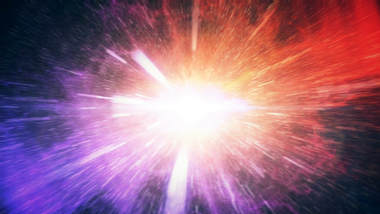 Over the last few years my connection with fire has deepened, and from that has evolved Sacred Hearth Friction fire. Here I will share a bit of that connection which will underlay the work of Sacred Hearth. We are created from fire, or as I like to say Forged from fire. The universe was created from the big bang.  Life on earth depends on the sun, a ball of fire. Without fire, we homosapiens would not have evolved into how we are today. Without fire there would be no Bronze Age, Iron Age, Industrial Revolution, the Digital Age etc. We are forged from fire. Fire creates life, but just as easily Fire taketh Life, and can destroy.
So Sacred Hearth will be based on these connections and beliefs, which will form foundation for my workshops, demonstrations and practice.
As is common throughout many indigenous cultures and ritual practice, the welcoming of fire invariably involves more than 1 person as can be seen in the below images. Cut to the photo of myself practicing the bow drill. It is quite common in modern bushcraft for it to be more of an individual pursuit (and a challenge) - there is nothing wrong with this, and in indigenous cultures they can and do, do it individually as it's essential for survival but commonly you see people working together. This is more the direction I shall be going in the way I shall teach\demonstrate\ ritually welcome in fire - in that it will be done with people working together more and I will also weave in awareness, respect for nature, stories and folklore into the teaching. Breathing into the sparks of possibilities..... watch this space 2018
Imagine the time before the discovery of fire. Then imagine one day witnessing a strange phenomenon of a bolt of light flashing through the sky, and a tree exploding into bright dancing colours. Scared and curious at the same time our ancestors may over time have approached that tree, and discovered this strange new sensation of extreme heat. Watching the fire engulf the tree, sparks darting off into the sky, flames dancing. Maybe they were mesmerised, what is this strange being. It made them warm, maybe they took a burning branch back to their shelter.
Those events and our ancestors learning to control and use fire changed the course of human evolution. You could say we are born from fire. It is thought that it took a very very long time, for our ancestors to learn to make fire, they would have kept the fires burning.. Imagine the fire going out, with no means to light it – what would you do? Go looking for other peoples and beg\borrow\steal their fire. There are many old stories from indigenous cultures of how people\animals would steal fires from others, usually through trickery! Over time, our ancestors eventually learnt how to coax and welcome fire, maybe through accidentally dropping rocks and seeing sparks, maybe through witnessing natural phenomenon such as trees being violently and vigorously rubbed against each other in high winds and smoke emitting from the friction. Old stories tell of how fire was taken in by the trees and the only way to coax the fire out was through friction. Over a long long time, they learnt how to coax the fire out. Can you imagine how that must have felt, and those who could make fire must have been revered, maybe viewed with some suspicion and superstition. That also then shaped the ongoing evolution of humankind. You can understand why fire was worshipped. Today, humankind takes fire for granted, along with everything else! Without fire we would not be where we are today (whether that is a good or bad thing!) I do think humankind as a whole thinks it’s above nature, rather than being a part of nature (anyway that's a whole different subject!) The main reason I started teaching myself friction fire, wasn’t for bushcraft or survival but to be able to light fires in a sacred and honouring way. To honour the fire, which you could say humankind has stolen for it’s own selfish needs. And you could say that each time I coax the ember, I’m stealing it for my own needs too! My focus has been quite practical to date (including my videos\posts), but over the last year I’ve become more absorbed in the old stories and sacredness of fire. The welcoming of fire through friction has now become more of a practice for me (like yoga or meditation.) And that is where I wish to try and re-focus myself, rather than just focussing on the skills in a practical way, teaching in a more holistic way drawing on the old stories and indigenous cultures, respecting and honouring fire and the natural environment, and with awareness, and if I do eventually decide to run my own workshop it would be more of a ritual as the welcoming of fire through friction can be seen as a ritual in itself, without even trying or being aware of it!
And one could say that it could be akin to a spiritual practice, like meditation, and to continue using the hand drill (unlike the bow drill which once you've grasped it needs little practice) you need to keep "practising" to keep your hands and muscles conditioned and so one could say that it does become a "practice." I don't get the same profound experience with the bow drill most likely due to the added technology but with the hand drill it is just you and two pieces of wood, so I find it very primordial and I can not be helped but to be moved by it, and I see it as a gesture, an offering to that something which is bigger than us all.
I also acknowledge that this is very personal to me, and I don't want to get preachy by it or enforce my way onto others, but I do somehow want to impart some of this awareness through my teaching (if I do hold any"workshops") by introducing story and a little light ritual where appropriate rather than it just being a practical workshop. I also think that learning friction fire should be your own journey and once a little knowledge has been imparted on how to make and use friction fire kits then it is for the individual to take it forward in their own way as they so wish. And for those who continue to light fires without awareness, so be it, but for me I will continue in my own way, and if some more people decide to do it with a little more awareness then that is all good too. In a couple of days we'll be going off-grid to Spirit Horse, an archiacially inspired encampment in a beautiful Welsh valley in mid-wales. Spirit Horse is what first inspired me to learn an old way of lighting fires, to be authentic and in the moment, and just be yourself.
There will be plenty of opportunity to light fires and teach others who are interested and willing, and just be with like minded souls. I will also try to create bow drill sets from materials I find on site, but it's not known for dry wood, the dead stuff is mostly damp and rotting (!) being in mid Wales!, so that'll be one challenge. But I'll also have some dry materials with me - for me it's also about preparation! 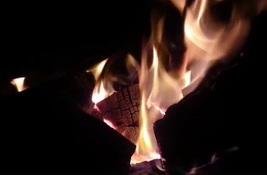 This evening, I continued with my hand drill practice and for the life of me I couldn't get an ember. I tried everything, and I haven't been able to get an ember for over a week. The result was a blister and my drill being thrown across the garden. It made me think and made me remember. Creating fire isn't easy. We have made it easy over thousands of years, and now generating heat is too easy! We take it for granted. We push a button or flick a switch and we have instant heat (central heating, cooker etc.) Lets remember that it took our ancestors thousands of years to develop techniques to create a fire, and the knowledge was passed on from generation to generation. There was a time when creating fire was seen to be magical. Those who could start fires were revered. And also remember fire was here long before human kind.... Fire was worshipped. Most cultures worshipped fire gods and goddesses, and gave offerings. For example: The Navajo fire god is Black God. He is the inventor of the fire drill and was the first being to discover the means by which to generate fire. Brigit is the Celtic goddess of fire (and water.) Fire was also a key part of ceremony and ritual. During Beltaine (the May Celtic festival), all fires and candles are extinguished and a bonfire is lit, using friction fire as it is deemed a more sacred way, and all other fires are then lit from this sacred fire. There are also many old folk tales, myths and legends about how people discovered fire. In the early days, people carried the embers with them, as they did not know how to create fire. And when they did learn how to create fire, it was only done when necessary and offerings would be made. Fires were kept lit whenever possible. So learning to create fire should not necessarily be easy. It should be challenging. It should not be taken for granted. The majority of us do not possess the skills or knowledge, it has to be re-learnt. So the next time, I attempt to create an ember I shall try to remember this. It has become a task. 6 weeks even months of learning the hand drill is not long in the scheme of things. It is a mere blink of the eye! Awareness is needed, and even praise. For it is a magical moment. Creating an ember from rubbing two pieces of wood together is alchemy! So the next time, I attempt to create fire whichever way I do it, I shall attempt to do it with more awareness. In today's world we want everything now, this minute! It wasn't always like that! For those chasing the next ember, take a moment, take a pause, have a thought for our ancestors. And maybe, give thanks to the sun, for that tiny spark of possibility! |
Archives
January 2024
Categories
All
|

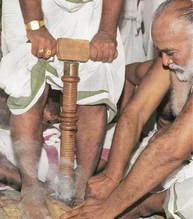
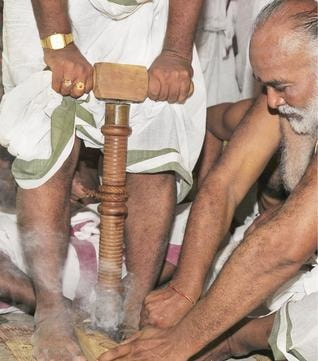
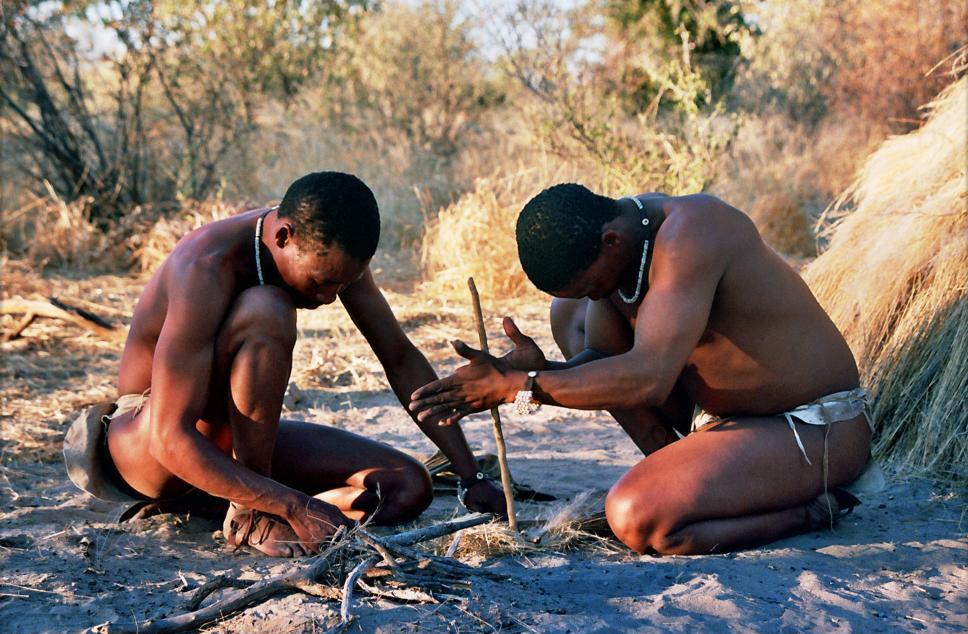
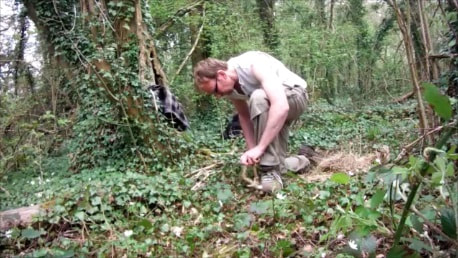
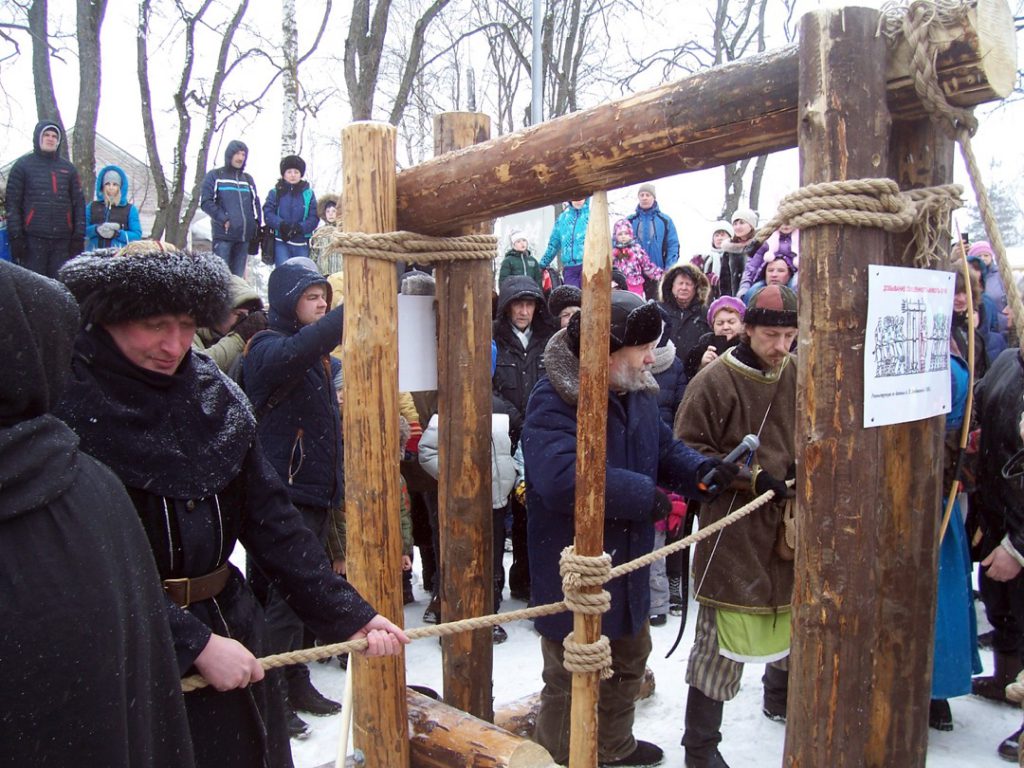
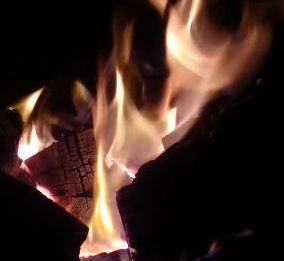
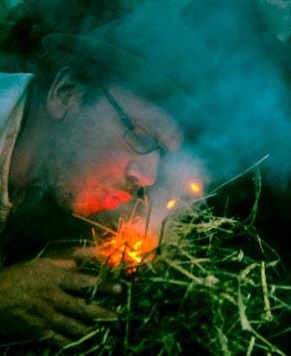
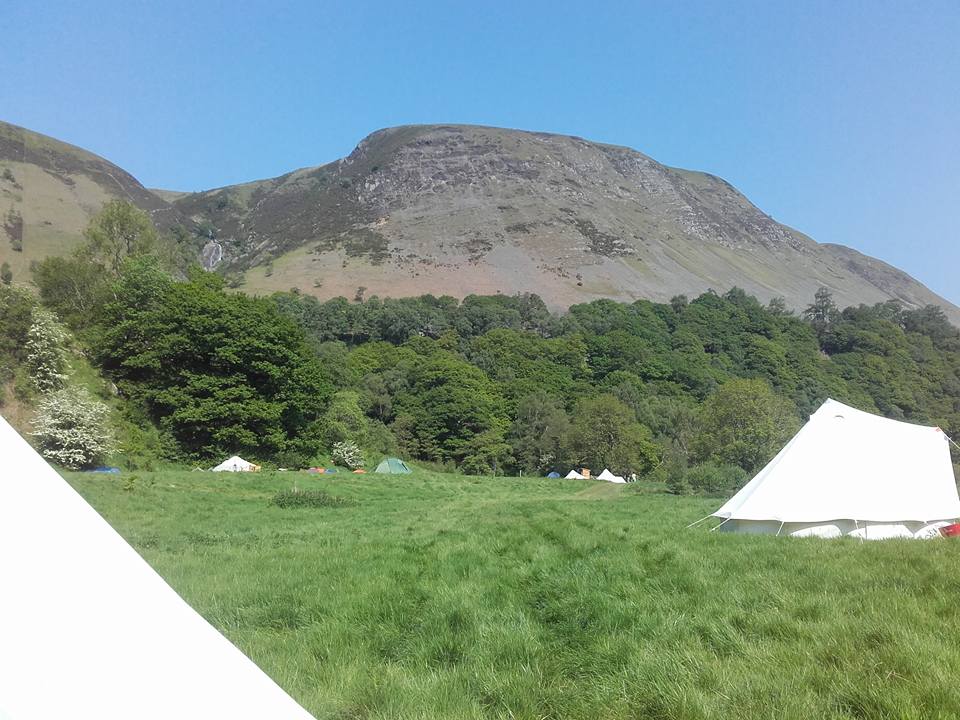
 RSS Feed
RSS Feed